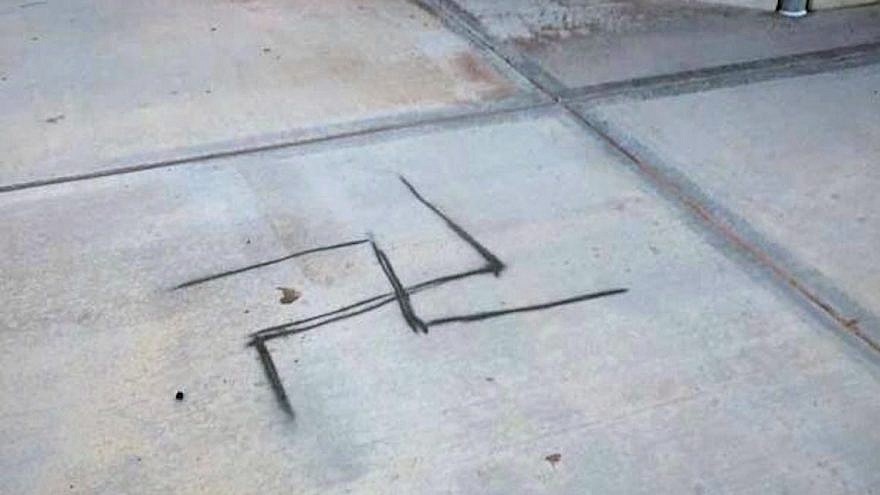American Jews are more worried about anti-Semitism than at any time in recent memory. Recent surveys conducted by the Anti-Defamation League and the American Jewish Committee show that they feel less safe with large numbers claiming personal experience of Jew-hatred.
So it was little surprise that the headlines about the publication this week of ADL’s annual audit of anti-Semitism in the United States seemed to validate that growing sense of insecurity felt by what is—notwithstanding all the bad news they’ve been fed about hate—the freest, most prosperous and most powerful Jewish community in the history of the Diaspora.
Many were already panicked by events like the October 2018 Pittsburgh synagogue shooting and the murder of a congregant at Chabad of Poway, Calif., the following April, both by lone gunman right-wing extremists. The announcement of the audit by ADL CEO and national director Jonathan Greenblatt highlighted the “historic” levels of anti-Semitic incidents and the “record” number of violent assaults that will scare even more people.
That the numbers were released during a global pandemic—when fears about history repeating itself with hatemongers ready to blame Jews for the spread of a new plague in the form of the coronavirus—further exacerbates the anxiety many are feeling while they struggle to cope with life under quarantine lockdowns.
The headlines about “the most anti-Semitic incidents in 40 years” seem to justify that kind of thinking, though a sober look at the data should lead observers to the opposite conclusion. Far from depicting a nation in the throws of a massive wave of anti-Semitic agitation, the ADL audit shows a country where attacks on Jews remain rare.
Though even one such attack is one too many, the notion that 61 examples of violence—or even the 2,107 incidents of all kinds, including vandalism or harassment, in a country of approximately 330 million people—hardly justifies the hype. More to the point, despite efforts to claim the contrary, the numbers don’t justify the effort to claim that anti-Semitism is primarily a product of right-wing extremism linked to Trump.
To the extent that there is real evidence of a surge in attacks, it concerns a very specific group of Jews (the ultra-Orthodox) in a specific region (Greater New York). Yet the surge of anti-Semitic hate against there has nothing to do with the talk about right-wing nutcases inspired by the president.
Over the last century, anti-Semitism has proven to be the sort of virus that easily attaches itself to a variety of ideologies—fascism, Nazism, socialism and Islamism—and is seemingly impervious to efforts to stamp it out. There is ample evidence of a genuine surge of Jew-hatred spreading across the Arab and Muslim worlds, and throughout most of Europe in recent years.
But the notion that Americans are sliding into such a morass of Jew-hatred is unjustified. Social media and the Internet allow tiny groups of extremists a megaphone that makes them seem more numerous than they actually are. Stumbling across Twitter threads or Facebook comments in which hateful language is employed is upsetting, but it’s not the same thing as Jews being afraid to walk the streets while wearing identifying clothing or jewelry, as is the case in some European capitals.
The only Jews who do face that kind of problem are the Chassidim in Brooklyn, N.Y., where, as the audit documents, more than half of the reported incidents of violence took place, as well as elsewhere in that region. The number of victims of anti-Semitic attacks totaled 95 nationally out of an estimated 5 million to 7 million Jews in the United States.
If you were one of those 95 persons or someone who suffered some form of harassment, or saw your local synagogue defaced by anti-Semitic graffiti, the fact that it is so unusual for Jews to be targeted in this manner is of little comfort. But the numbers undermine efforts to claim that Jews are under siege.
More to the point, despite the consistent efforts to politicize this issue as a right-wing trend enabled by Trump, such as one column published by the Forward claimed, the ADL’s numbers don’t back up the notion that the slight increase in incidents is a function of a resurgent and violent far-right. The vast majority of incidents reported that referenced hostility to Israel or Zionism had nothing to do with right-wingers. Most were either the result of random hatred or the product of left-wing pro-BDS anti-Semitism. Though incidents on college campuses slightly declined in 2019, responsibility for them is still the work of left-wing hate groups.
The perpetrators of the one undeniable surge of anti-Semitic violence in the last year involving attacks on Orthodox Jews in Greater New York were largely African-Americans. While local issues may be responsible for some of those attacks, the legitimacy given anti-Jewish and anti-Israel rhetoric by many of that community’s liberal leaders play a part in what has happened. Nor should it be forgotten that while right-wingers are reviled by mainstream conservatives, some of those on the left who spout hate against Jews, such as like Reps. Ilhan Omar (D-Minn.) and Rashida Tlaib (D-Mich.), are treated as rock stars of the Democratic Party.
All those responsible for anti-Jewish hate deserve condemnation, no matter what their political leanings might be. And even a slight uptick in incidents, as the ADL reported, warrants concern.
Yet American Jews should not succumb to fear or partisan-inspired paranoia. No matter how you spin the ADL’s numbers, the total of incidents still paints a portrait of a country where anti-Semitic attacks of any kind are remarkably rare, and in which violent right-wingers remain few and isolated. The real plot against America comes from those who would deny the fact that for all of its problems, it is a country where Jews continue to live in freedom and where you are more likely to get hit by lightning than to suffer violent anti-Semitism.


























